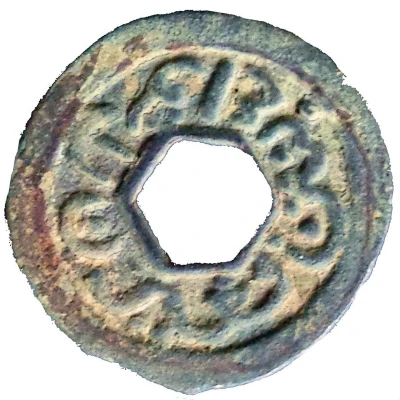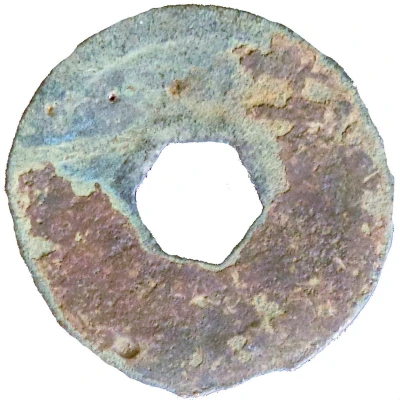


© John3 16
1 Cash - Pangeran Ratu ing Banten ND
1620 year| Lead | 2.11 g | 25.7 mm |
| Issuer | Sultanate of Banten (Indonesian States) |
|---|---|
| Type | Circulating commemorative coin |
| Year | 1620 |
| Value | 1 Cash |
| Currency | Cash |
| Composition | Lead |
| Weight | 2.11 g |
| Diameter | 25.7 mm |
| Thickness | 1.0 mm |
| Shape | Round with cutouts (Hexagonal hole) |
| Demonetized | Yes |
| Updated | 2024-10-05 |
| Numista | N#106786 |
|---|---|
| Rarity index | 91% |
Reverse
Rim around hole and edge.
Edge
Plain
Comment
Mitchiner (2012:29) date these coins to the 1620s. This corresponds to the reign of Sultan Abu al-Mafakhir Mahmud Abdulkadir (1596–1651) in the Banten Sultanate.Copper version of these coins were issued during Banten's period of prosperity brought in by the pepper trade. According to Mitchiner (2012:28), the weight and quality of Banten copper coins suggest that they may have not been used as common currencies of the general populace but rather used as a prestigious form of payment by the Banten royal court. Their production ceased when Banten's prosperity declined following Dutch monopoly of pepper around the 1640s. Lead version of those coins may saw continual production afterwards.
See:
- Millies, Henricus Christiaan (1871). Recherches sur les Monnaies des Indigènes de L'Archipel Indien et de la Péninsule Malaie.
- Mitchiner, Michael (2012). "Coin Circulation in Palembang (Sumatra), circa AD 1710 to 1825. Including Coins made in Banten, Siak, Kampar, Indragiri, Jambi, Palembang and Batavia."
Interesting fact
The Pangeran Ratu ing Banten ND (1620) coin from the Sultanate of Banten (Indonesian States) is interesting because it was made of lead, which is a relatively soft and malleable metal, yet it was still used as a circulating commemorative coin. This suggests that the Sultanate of Banten may have been experimenting with different materials for their coins, or that lead was a readily available and affordable option for them at the time.